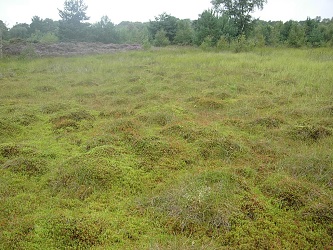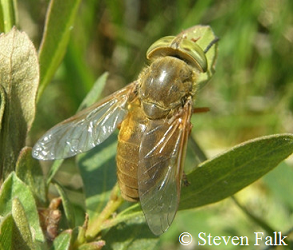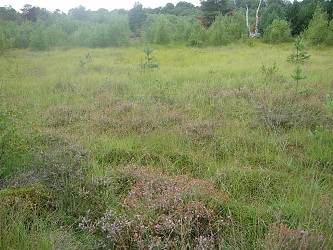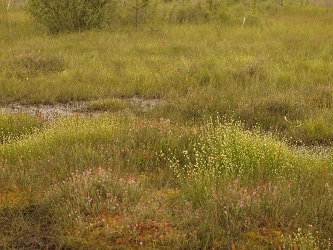Current ISIS code: W312
Previous assemblage name: W312 acid mire, W145 neutral/acid seepages, & W112 poor fens.
Linked assemblage: n/a
Description of habitat typically supporting the assemblage: This assemblage type is characterised by a large number of species from a variety of taxonomic groups.
The assemblage type is more or less restricted to soligenous and ombrotrophic mires. Species richness is very low in ombrotrophic mires unless there is some disturbance of the substrate, for example small-scale peat cutting.

Water chemistry is often acidic, but not exclusively so. Low productivity appears to be more important than base status. Some species, such as Elaphrus lapponicus, have a predominantly upland distribution, while others, such as Acylophorus glaberrimus, are restricted to the New Forest and southern heathland.



Potentially important environmental impacts
- Large scale disturbance e.g. peat extraction, afforestation, wind farm infrastructure construction.
- Siltation from surface run-off.
- Nutrient enrichment.
- Interruption in ground-water supply.
Responses to changes associated with intensive grazing and peat erosion are varied and poorly understood. Some associated species have been recorded in large numbers on bare peat associated with localised disturbance.
Sampling & assessing the assemblage
Standard sampling protocols apply.
Target groups: beetles & bugs
Fieldwork methods: ground-searching, pond netting
Alternative methods: pitfall trap grids
Season: spring and summer
Target groups: flies
Fieldwork methods: spot-sweeping, sweep-netting
Alternative methods: water trap grids
Season: spring and summer
As productivity tends to be low, properly sampling these assemblages requires a more longer term trapping programme, and passive traps can usefully augment more active trapping forays using sweep nets, hand searches in sphagnum, sieving, etc.
Discrimination of conservation quality: good
Default target: 8 species
